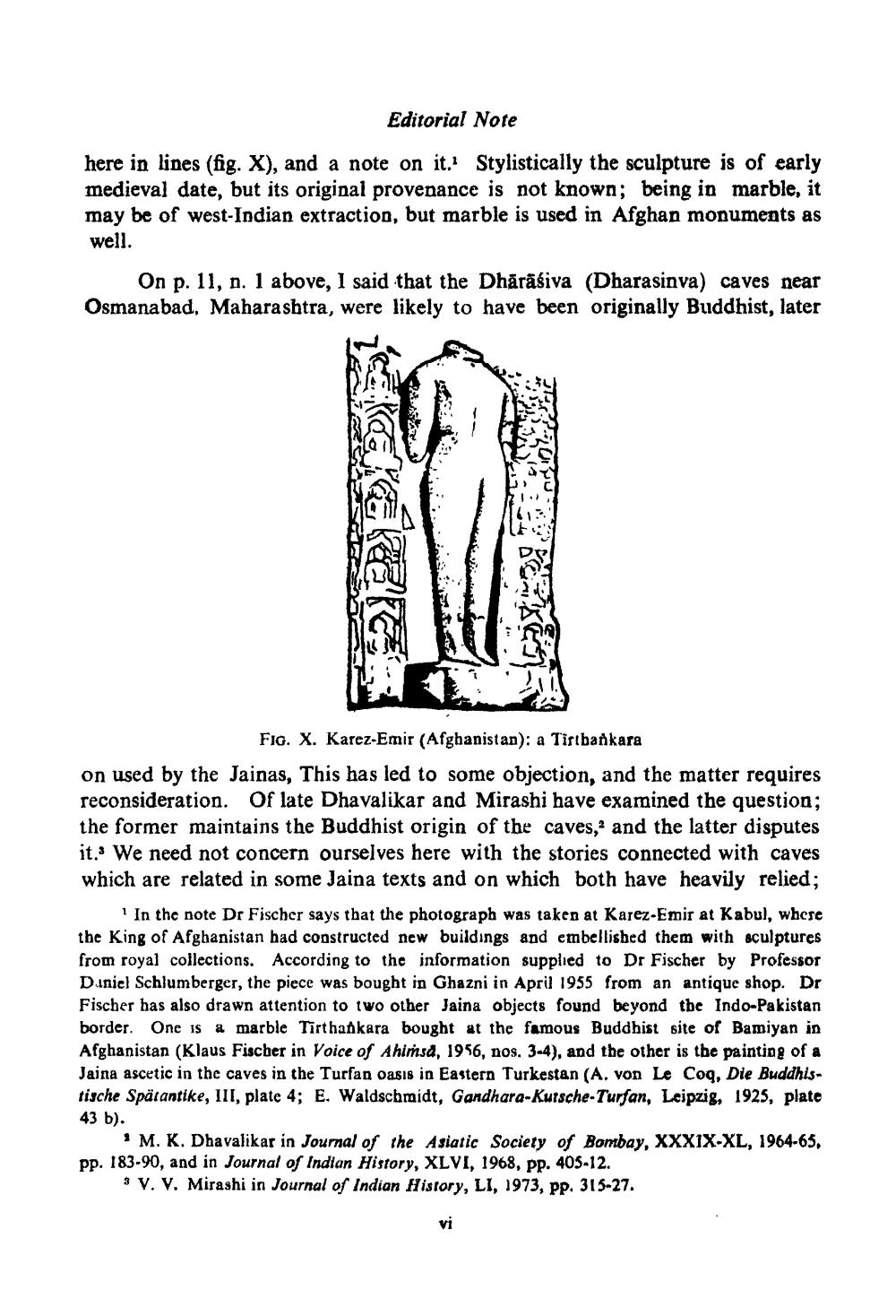________________
Editorial Note
here in lines (fig. X), and a note on it. Stylistically the sculpture is of early medieval date, but its original provenance is not known; being in marble, it may be of west-Indian extraction, but marble is used in Afghan monuments as well.
On p. 11, n. 1 above, I said that the Dhārāśiva (Dharasinva) caves near Osmanabad, Maharashtra, were likely to have been originally Buddhist, later
1. 1 above, i said they
have
PERO
LIA
W
-
-
V
hiBOY
WPA
22
•
FIG. X. Karez-Emir (Afghanistan): a Tirtbankara on used by the Jainas, This has led to some objection, and the matter requires reconsideration. Of late Dhavalikar and Mirashi have examined the question; the former maintains the Buddhist origin of the caves, and the latter disputes it.. We need not concern ourselves here with the stories connected with caves which are related in some Jaina texts and on which both have heavily relied;
? In the note Dr Fischer says that the photograph was taken at Karez-Emir at Kabul, where the King of Afghanistan had constructed new buildings and embellished them with sculptures from royal collections. According to the information supplied to Dr Fischer by Professor Daniel Schlumberger, the piece was bought in Ghazni in April 1955 from an antique shop. Dr Fischer has also drawn attention to two other Jaina objects found beyond the Indo-Pakistan border. One is a marble Tirtha kara bought at the famous Buddhist site of Bamiyan in Afghanistan (Klaus Fischer in Voice of Ahińsd, 1956, nos. 3-4), and the other is the painting of a Jaina ascetic in the caves in the Turfan Oasis in Eastern Turkestan (A. von Le Coq, Die Buddhistische Spätantike, III, plate 4; E. Waldschmidt, Gandhara-Kutsche-Turfan, Leipzig, 1925, plate 43 b).
M. K. Dhavalikar in Journal of the Asiatic Society of Bombay. XXXIX-XL, 1964-65. pp. 183-90, and in Journal of Indian History, XLVI, 1968, pp. 405-12.
3 V. V. Mirashi in Journal of Indian History, LI, 1973, pp. 315-27.




